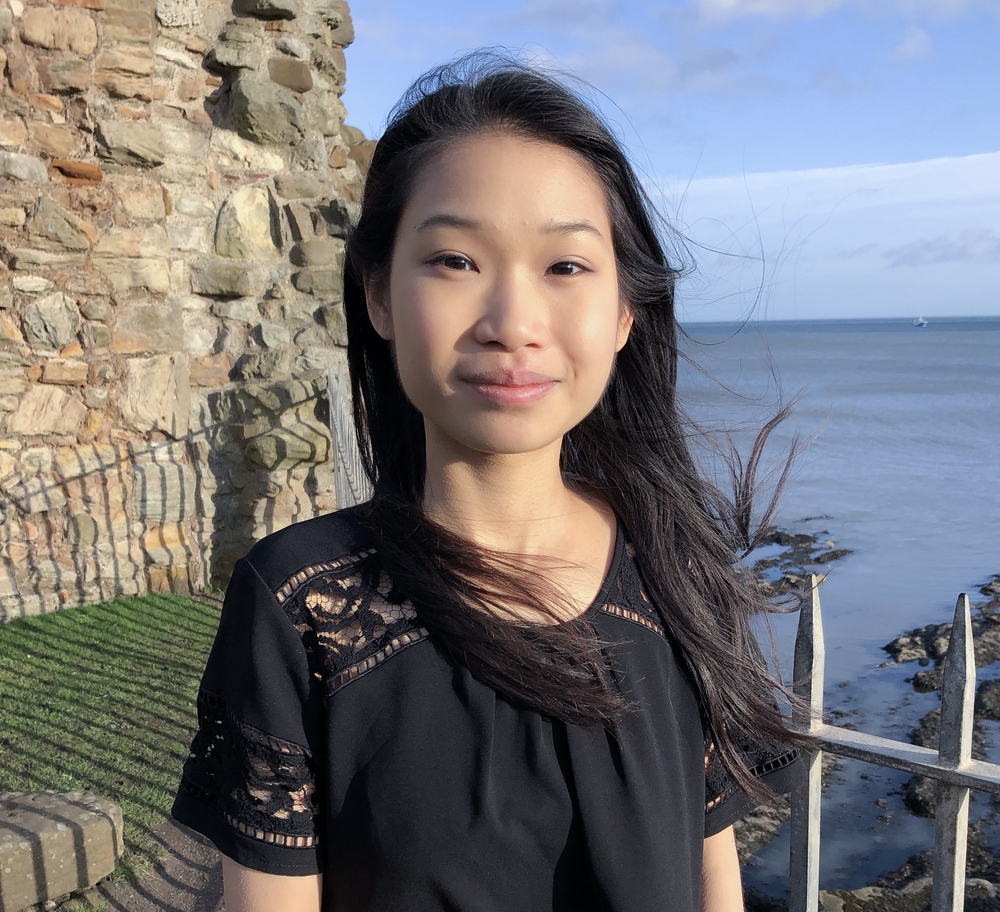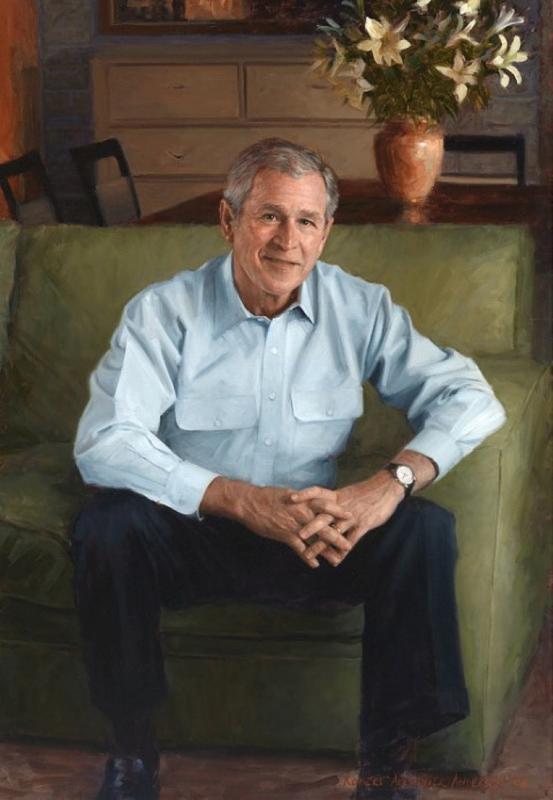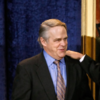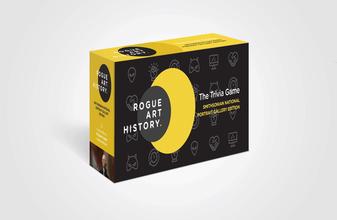More about George W. Bush
- All
- Info
- Shop

Sr. Contributor
George W. Bush’s portrait for the Smithsonian National Portrait Gallery was painted by his college friend, Robert Anderson, who was in the same Yale Spanish class as the future president.
Coincidentally, both were also in Boston in the 1970s. Whilst Bush was at Harvard for his MBA and Anderson was studying painting at the School of the Museum of Fine Arts, the two sometimes bumped into each other around town. They lost contact after graduate school but reconnected when Anderson received a commission to paint the portrait of the president for the Yale Club of New York. Between his first portrait for the Yale Club and the NPG commission, Anderson visited the Bushes at Camp David (the setting of this presidential portrait), and attended Bush’s 60th birthday at the White House.
The portrait is painted through the perspective of a friend and pointedly informal. At the unveiling, Bush remarked, “I needed to find a person who would do the painting that would be a good and forgiving friend.” Bush sits on the edge of a sofa in an open-collared western shirt, wearing a warm, relaxed expression on his face. The room is simply furnished with only a touch of opulence in the ceramic vase filled with irises on the table. In contrast to preceding presidential portraits in a style descended from the royal portrait tradition of academic art, which created distance to show sitters as untouchable, Anderson gives Bush a sense of accessibility in the portrait, removing the sense separation by painting him in repose.
Bush requested an less formal image, perhaps due to his political persona as plainspoken Southerner. His main appeal was his sense of normality, which was reflected in his simple language, in comparison to Al Gore’s oratory eloquence. He appealed to the working and middle classes by portraying himself as the easygoing, down home candidate despite his elite education and background. In his commencement address for Yale, he stated, “C students–you too can be president,” underlining his speech with a combination of the American dream narrative that anyone could become president and the charm of his self-deprecating humor. Though the statement is perhaps a bit ironic when addressing the graduating class of one of the most elite institutions in the United States, it demonstrates his appeal as the epitome of the guy-you’d-want-to-have-a-beer-with.
Despite his astronomical 90 percent approval rating during the early days of his presidency, he grew increasingly unpopular most notably due to the Afghanistan war, the government response to Hurricane Katrina, and the 2008 financial crisis. He left office with a 33 percent approval rating, with 60 percent of Americans believing that he would be considered a below average president in the annals of history. After leaving office, he kept a relatively low profile. He was aware of how he was portrayed by the media, and took a hands off approach to post-presidency life, stating, “I have other responsibilities. I can’t spend time trying to reengineer my legacy.”
After leaving the White House, Budh took up oil painting, even publishing a book about veterans entitled Portraits of Courage, which featured the vets’ stories alongside his portraits. He also painted a series of portraits of world leaders from his father to Tony Blair to the Dalai Llama to Vladimir Putin, all which hang in the George W. Bush Presidential Library at Southern Methodist University in University Park, Texas. A self-portrait of him taking a shower has also been reviewed by critics including Gawker, who described it as “awkward” and “simple." In response, art critic Jerry Saltz of New York Magazine, wrote a positive review, describing the painting as “show[ing] someone doing the best he can with almost no natural gifts–except the desire to do this.”
The common denominator between Anderson’s informal portrait and Bush’s own art is his uncomplicated naturalness. Either captured through the eyes of a friend or through the simple, awkward brushstrokes of Bush himself, both reveal his self-image as the friendly, approachable type of former president.
Sources
- De Simone, Deborah M. "The Consequences of Democratizing Knowledge: Reconsidering Richard Hofstadter and the History of Education." The History Teacher 34, no. 3 (2001): 373-82. doi:10.2307/3054348.
- Folk, Elyssa. “Bush mixes humor and humility in Commencement talk.” Yale News. May 22, 2001. https://yaledailynews.com/blog/2001/05/22/bush-mixes-humor-with-humilit…
- Gambino, Megan. “George W. Bush’s Portrait at National Portrait Gallery.” Smithsonian Magazine. January 7, 2009. https://www.smithsonianmag.com/smithsonian-institution/george-w-bushs-p….
- “George W. Bush.” National Portrait Gallery, Smithsonian. Accessed April 16, 2021. https://npg.si.edu/object/npg_NPG.2008.51.
- Grant, Daniel. “Painting the President.” ArtNet. Accessed April 16, 2021. http://www.artnet.com/magazineus/features/grant/painting-the-president6….
- Gregg II, Gary L. “George W. Bush.” UVA Miller Center. https://millercenter.org/president/gwbush.
- Lesser, Casey. “The Artist Who Taught George W. Bush to Paint.” Artsy. April 4, 2017. https://www.artsy.net/article/artsy-editorial-artist-taught-george-bush….
- “Robert A. Anderson.” Portraits, Inc. Accessed April 16, 2021. https://portraitsinc.com/artists/master/Robert-A.-Anderson/.
- Rossman, Sean. “George W. Bush, the artist, to open a new portrait exhibit.” USA Today. March 1, 2017. https://www.usatoday.com/story/news/politics/onpolitics/2017/03/01/geor….
- Saltz, Jerry. “George W. Bush Is a Good Painter!” New York Magazine. February 8, 2013. https://www.vulture.com/2013/02/jerry-saltz-george-w-bush-is-a-good-pai….
- Shattuck, Ben. “Painting the President.” The Morning News. December 9, 2014. https://themorningnews.org/article/painting-the-president.












